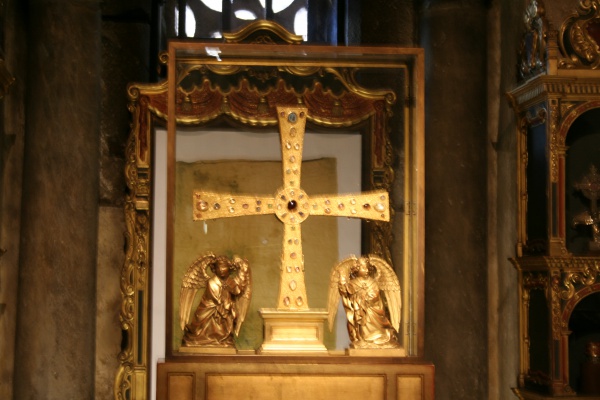Facts About Cross of the Angels
The Cross of the Angels is a revered pre-Romanesque Asturian relic, bestowed by King Alfonso II of Asturias in 808 to the Church of San Salvador in Oviedo, Asturias. It transcends mere historical significance, representing an enduring symbol of the city of Oviedo. This cross is noteworthy as the earliest extant example of jewelry from the Kingdom of Asturias.
Over the centuries, the cross has faced numerous challenges. Notably, it sustained damage during a robbery in 1977 but has since been meticulously restored to its former magnificence. The Cross of the Angels showcases a squared design characteristic of Greek crosses, crafted from two pieces of cedar wood with a circular disc at its center.
King Alfonso II's donation is often regarded as an expression of gratitude following his restoration to the throne after a period of captivity in the Monastery of Abelania. The cross bears a Latin inscription, translating to a message of protection and victory for the faithful and a warning to adversaries. It is adorned with rings on its lateral arms, from which chains embellished with pearls and precious stones—referred to as pendilia—suspend, reminiscent of votive crosses and crowns from the Visigothic treasure of Guarrazar.
By the 15th century, the Cross of the Angels had unequivocally established itself as the emblem of Oviedo. Historical records indicate that it may have served as the city's seal as early as 1262. The cross is also engraved on the old city walls, featuring the Greek letters alpha and omega, symbolizing consecration. Today, the Cross of the Angels is prominently displayed in the coat of arms of both Oviedo and the Roman Catholic Archdiocese of Oviedo.

 Andorra
Andorra